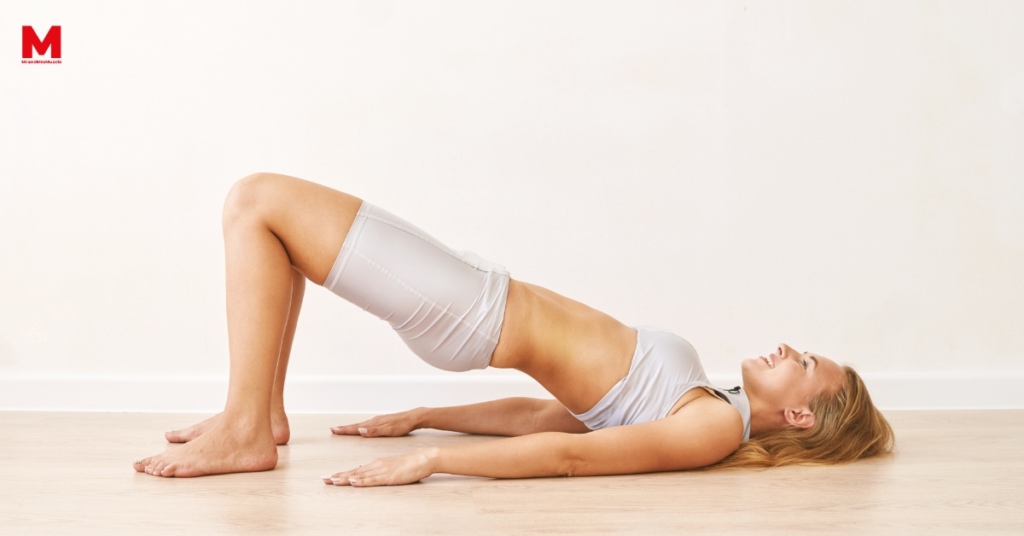Having a strong pelvic floor is essential for a range of activities and functions such as running, jumping, bladder control, and sexual health. That’s why it is important to make sure your pelvic floor is strong and healthy. Luckily, there are plenty of pelvic floor exercises you can do to help strengthen it. In this blog post, we will be sharing five different exercises on how to strengthen your pelvic floor and make sure it remains healthy. Read on to find out more.
What is the pelvic floor and why is it important?
The pelvic floor refers to a group of muscles and connective tissues that span the bottom of the pelvic cavity. These muscles provide support to the organs in the pelvic area, including the bladder, uterus, and rectum. They also play a crucial role in maintaining urinary and bowel control, as well as sexual function.
Having a strong pelvic floor is important for several reasons. Firstly, it helps prevent pelvic organ prolapse, a condition where the pelvic organs descend and bulge into the vaginal canal.
Moreover, a strong pelvic floor is vital during pregnancy and childbirth. It helps support the growing baby and prepares the body for labor and delivery.
The benefits of a strong pelvic floor
Having a strong pelvic floor is incredibly beneficial for both men and women. Here are the key benefits of having a strong pelvic floor:
- Improved bladder and bowel control: A strong pelvic floor can help prevent and manage issues such as urinary incontinence and fecal incontinence. This can greatly improve your quality of life and reduce any embarrassment or discomfort associated with these conditions.
- Enhanced sexual function: A strong pelvic floor can lead to improved sexual sensations and orgasms. It can also help with maintaining an erection in men and improving vaginal tone and lubrication in women.
- Reduced risk of prolapse: A weakened pelvic floor can lead to pelvic organ prolapse, which is when one or more of the pelvic organs (such as the bladder, uterus, or rectum) descend into the vagina. A strong pelvic floor can help prevent or reduce the risk of prolapse.
- Strong core and back support: The pelvic floor muscles are part of the core muscles that provide support for your spine and back. By strengthening your pelvic floor, you are also improving your core strength and stability.
- Faster postpartum recovery: Pregnancy and childbirth can weaken the pelvic floor muscles. Strengthening these muscles before and after childbirth can help speed up your recovery and reduce the risk of long-term pelvic floor issues.
In summary, having a strong pelvic floor offers numerous benefits including improved bladder and bowel control, enhanced sexual function, reduced risk of prolapse, strong core and back support, and faster postpartum recovery. By prioritizing pelvic floor exercises, you can enjoy these advantages and improve your overall health and well-being.
Common causes of pelvic floor weakness
Pelvic floor weakness is a common issue that affects many individuals, especially women. There are several factors that can contribute to a weakened pelvic floor, including:
- Pregnancy and childbirth: The pelvic floor muscles can become stretched and weakened during pregnancy and delivery. The pressure placed on these muscles during childbirth can also cause damage or tears, leading to pelvic floor weakness.
- Aging: As we age, our muscles naturally lose strength and elasticity. The pelvic floor muscles are no exception. Hormonal changes during menopause can also contribute to muscle weakness in this area.
- Chronic constipation: Straining during bowel movements can put excessive pressure on the pelvic floor muscles. Over time, this can lead to weakening of the muscles and potential dysfunction.
- High impact activities: Participating in activities that involve jumping, running, or heavy lifting can put strain on the pelvic floor muscles. Over time, this repetitive stress can contribute to muscle weakness.
- Obesity: Carrying excess weight can place added pressure on the pelvic floor muscles, causing them to weaken over time.
It is important to note that these factors can contribute to pelvic floor weakness in both men and women. It is not solely a female issue. Understanding the common causes of pelvic floor weakness can help individuals take proactive steps to prevent or address this issue.
5 Exercises to strengthen your pelvic floor:
Having a strong pelvic floor is essential for overall health and wellbeing, particularly for women. A strong pelvic floor can help prevent urinary incontinence, improve sexual function, and support the organs in the pelvic area. In this section, we will explore five exercises that can help strengthen your pelvic floor muscles.
- Kegels: Kegel exercises are perhaps the most well-known and effective exercises for strengthening the pelvic floor. To perform a Kegel exercise, simply contract the muscles of your pelvic floor as if you were trying to stop the flow of urine. Hold this contraction for a few seconds and then release. Repeat this exercise several times a day.
- Squats: Squats are not only great for toning the lower body, but they also engage the muscles of the pelvic floor. To perform a squat, stand with your feet shoulder-width apart and lower your body as if you were sitting back into a chair. Make sure to engage your pelvic floor muscles throughout the exercise.
- Bridge Pose: Bridge pose is a yoga pose that specifically targets the muscles of the pelvic floor. Lie on your back with your knees bent and feet flat on the ground. Slowly lift your hips off the ground, keeping your feet and shoulders grounded. Hold this pose for a few breaths and then slowly lower back down. Repeat this exercise several times.
- Dead Bug: The dead bug exercise is a great way to engage and strengthen the pelvic floor. Lie on your back with your arms extended above your chest and your knees bent at a 90-degree angle. Slowly lower one arm and the opposite leg towards the ground while maintaining a stable pelvis. Return to the starting position and repeat on the other side. Aim for 10 repetitions on each side.
- Pilates: Pilates is a form of exercise that focuses on core strength, including the muscles of the pelvic floor. Incorporating pilates exercises into your routine can be a great way to strengthen your pelvic floor. Look for classes or online tutorials that specifically target the pelvic floor.
By incorporating these exercises into your regular fitness routine, you can strengthen your pelvic floor and enjoy the many benefits that come with it. Remember to always listen to your body and consult with a healthcare professional before starting any new exercise program.
Tips for maintaining a strong pelvic floor:
Now that you have learned about the importance of strengthening your pelvic floor and tried out some exercises, it’s essential to maintain the strength you have built. Here are some tips to help you keep your pelvic floor strong and healthy:
- Stay hydrated: Drinking enough water can help keep your pelvic floor muscles hydrated, flexible, and healthy.
- Practice good posture: Poor posture can weaken the muscles in your pelvic floor. So, it’s important to maintain good posture while sitting, standing, and even when sleeping.
- Kegel exercises: Regularly doing Kegel exercises can help maintain the strength of your pelvic floor muscles. Practice these exercises 3-4 times a week.
- Avoid constipation: Constipation can put unnecessary strain on your pelvic floor muscles, which can weaken them over time. Eat a diet high in fiber, stay hydrated, and avoid straining during bowel movements.
- Manage weight: Extra weight can put added pressure on your pelvic floor muscles. Maintain a healthy weight by eating a balanced diet and engaging in regular physical activity.
By incorporating these tips into your lifestyle, you can keep your pelvic floor strong and healthy. Remember that consistency is key, so make sure to make these tips a part of your daily routine.
Summary
Having a strong pelvic floor is crucial for overall health and well-being, as it supports key organs and bodily functions. By doing pelvic floor exercises regularly, you can improve your core strength, balance, and sexual function, while also reducing your risk of incontinence and other pelvic floor-related issues. Don’t wait until you experience symptoms to start working on your pelvic floor; make these exercises a regular part of your routine today and enjoy the benefits of a healthy and strong pelvic floor for years to come.


